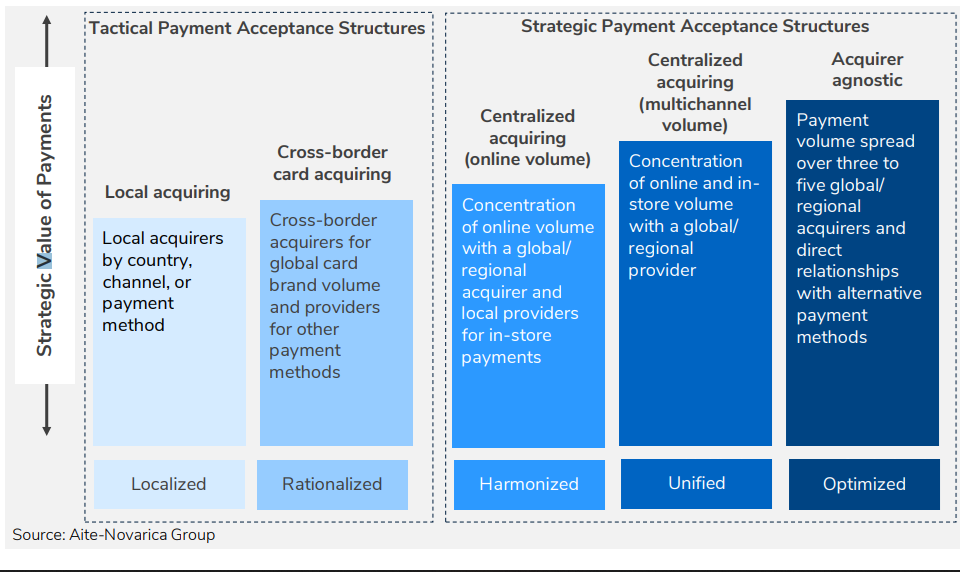Accepting payments when a merchant’s customers live around the world is hard. Global merchants need to be able to market, sell, and deliver their products in literally hundreds of different markets. Aside from making sure that consumers can find what they need in a language that they understand, customers also need to be able to pay for their purchases with a payment type that they have and, ideally, that they prefer to use.
Managing the payment process is a significant challenge for global multinational corporations (MNCs). Leading MNCs are looking for the flexibility to harmonize their payments processing, profit from local market conditions for better authorization rates and cost reduction, minimize operational risk (e.g., outages), and simplify acquiring relationships when possible.
A recently completed study by Aite-Novarica Group, Mitigating the Payments Mayhem, sheds light on the strategic significance of payments management for global merchants and provides insight into how leading companies manage the payments landscape to drive business success.
Merchant Strategy Drives Payments Acceptance Structure
Merchants have several options for working with payment partners to realize their payments acceptance strategies. The study presents five stages of maturity for the payments acceptance structures that MNCs can deploy, depending on the strategic value of payments to their organization.
Merchants’ choices for these structures may be mostly tactical, borne out of their corporations’ history of organic growth or as a result of mergers and acquisitions; they can be strategic, striving for harmonized payments processing; or they can be built on unified solutions across multiple channels.
MERCHANT STRATEGY DRIVES THE CHOICE OF PAYMENTS ACCEPTANCE STRUCTURE

Some merchants will further optimize their payments processing, investing to reach maximum strategic value. Enterprise merchants can also deploy a hybrid of such structures to realize their strategy. The choice of model depends on the corporation’s strategy to deliver its core business—which is not payments.
Merchants should assess their payments value chain and then gather information from vendors and industry practitioners to understand in detail the benefits and risks of different payments acceptance setups. By optimizing acquirer relationships to the needs of the organization, significant improvements in conversion, cost reduction, and resilience can be achieved.
Merchants can choose to work with a single acquirer for online and in-store payments for a unified approach to payments acceptance. This one-stop-shop approach makes life easier for merchants by minimizing investment and improving operational efficiency. Other enterprises may prefer more flexible, acquirer-agnostic approaches. They can choose to work with a provider that allows them to keep full control of payment processing but use the services they need, e.g., for APM support, local acquiring, orchestration, fraud detection, or smart routing. This allows them to optimize their payments acceptance processes.
As the payments ecosystem becomes increasingly complex, the trend is clearly toward a more strategic role for payments processing management, especially in online merchant business. Acquirers, processors, and payment service providers have an opportunity to emphasize the strategic value of payments and demonstrate how their solutions can help merchants make the transition to the best-in-class category. To learn more about the evolving payments ecosystem, read Ron van Wezel’s and my latest report, Mitigating the Payments Mayhem: Payments Acceptance Strategies for Multinational Merchants or download the report summary here.

